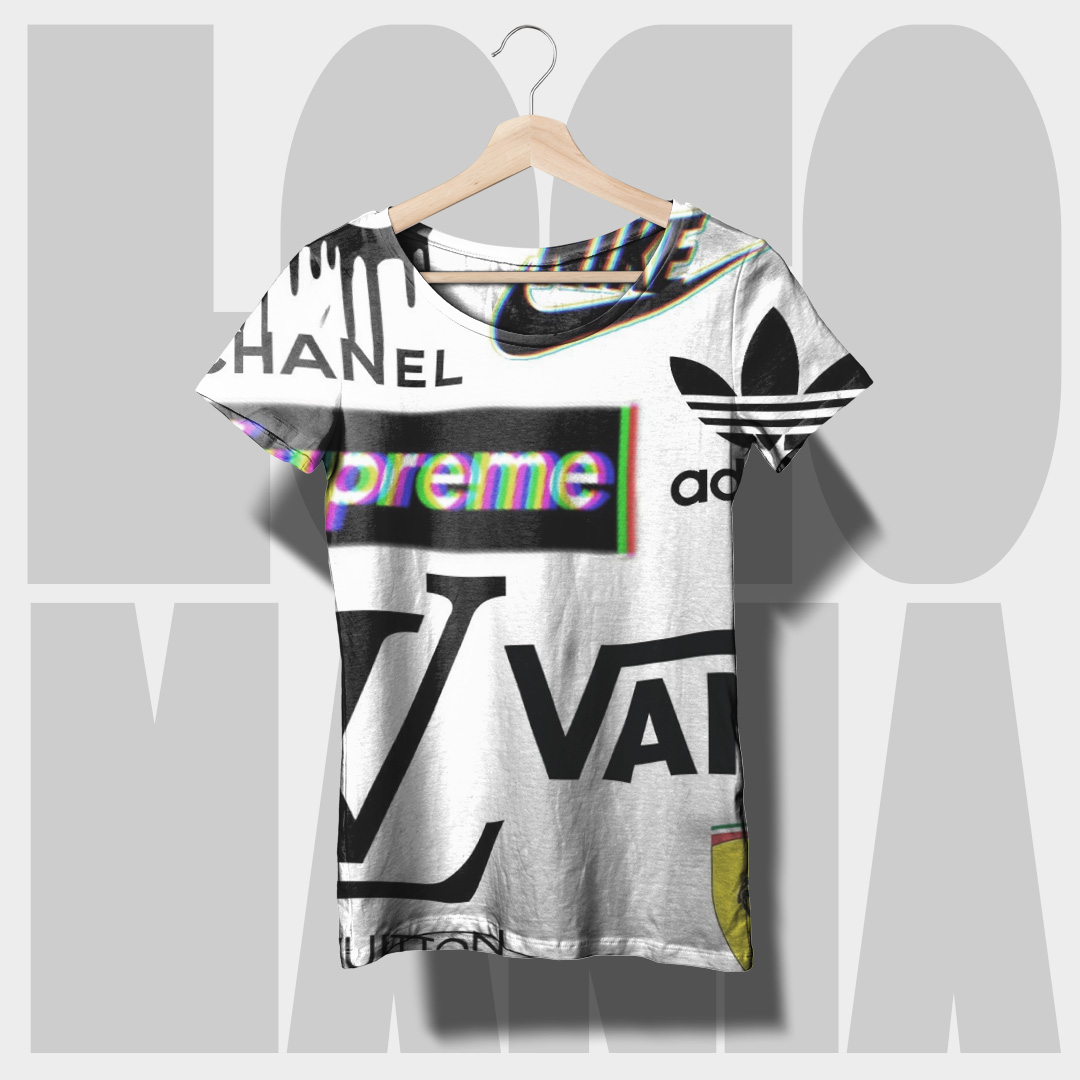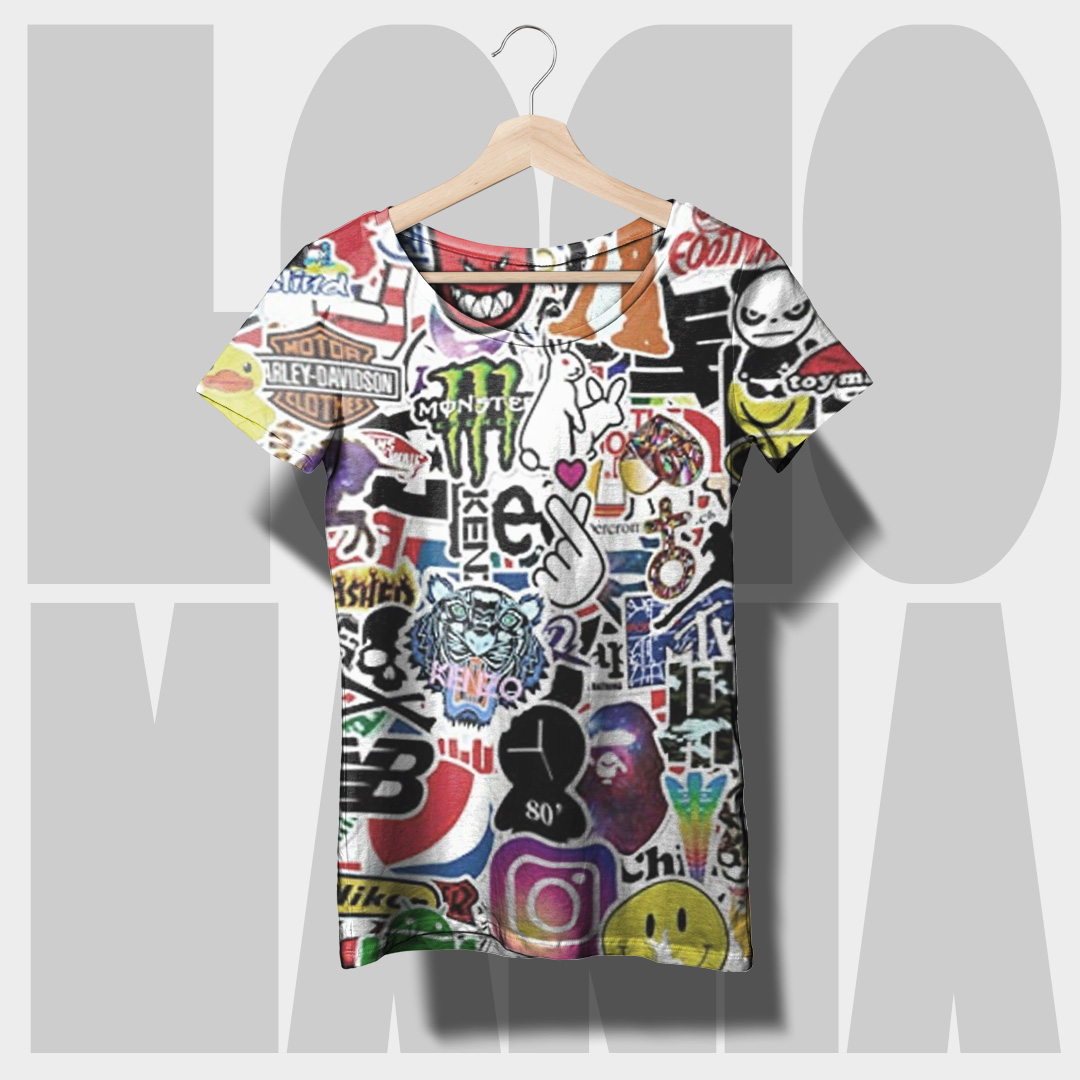Share this
Is Logomania the Enemy of Fashion?
by Jasmine Glasheen on Feb 24, 2023 8:50:52 AM
Home > Blog > Is Logomania the Enemy of Fashion?
Table of Contents
- A word from Logomania’s detractors
- Is logomania over?
- Why is logomania a 2023 fashion trend?
- PLM software facilitates reporting
Surefront is a Unified Product Collaboration Platform with PIM, CRM, and PLM solutions. It's a centralized data home where stakeholders can freely share product information and assign access permissions. Most integrations are supported in Surefront, but none are needed. Our articles often focus on one aspect of our unified PIM, PLM, and CRM platform. With Surefront, each solution seamlessly works together to achieve a guaranteed 10x ROI for every customer.
People have been saying that logomania is over since the early 80s. Nevertheless, it persisted. Are you wondering, “what is logomania’s meaning?” Here it is: Logomania is the overt use of logos on apparel, accessories, consumables and – in a few unfortunate cases – printed onto model’s faces. Critics and forecasters be damned, it looks like logomania will remain at the forefront of fashion trends for 2023.
Logomania started with Coco Chanel using her initials as an interwoven “CC” back in 1925. Since then, logos have become bolder and more aggressive. In the 80s, early hip hop designer, Dapper Dan, used logos in a new way –– juxtaposing overt logos and graphics on apparel to create a “more is more” brand name vibe. Not unlike Chanel’s faux stones, Dapper Dan’s “counterfeit” logo-ridden goods became sought after of their own right.
Logomania now has a much different meaning than simply upholding the status quo. Luxury brands that were once known for their craftsmanship –– Saint Laurent, Balenciaga, Gucci, Louis Vuitton, and many others –– have doubled down on this trend.
Let’s take a look at what detractors of logomania have to say, whether logomania is really over, and how retail software can help brands affix their logo to quality products.
A word from Logomania’s detractors
The fashion industry is bifurcated in individual sentiment towards logomania. Enthusiasts say that logomania is a way to own or subvert the status quo. Detractors feel that it kowtows to that same status quo, with consumers spending more than they can afford in pursuit of status and social ranking. Over the years, logomania has been called everything from gauche to a “worker’s rights issue,” but it’s still a prevalent fashion trend in 2023.
Take Dapper Dan’s reimagining of traditional logos. It gave hip hop artists a new way to own a little taste of luxury, even though Dapper’s logos weren’t actually purchased from the brands. Dapper’s early business model obviously wouldn’t fly in today’s litigious society.
But Gen Z and Millennial consumers are even more thirsty to subvert social norms than our predecessors. That’s why luxury and high end brands from Jimmy Choo to Tiffany and Co. are scouring the internet for street artists to collaborate with –– in hopes of attracting next gens and rebels by adding a subversive flair to their legacy brand.

Is logomania over?
But is logomania really over? After the dialing down of logo use in the early aughts, street style brands like Supreme brought logomania back around 2010. Present day logomania is more about a tribe mentality than classism, particularly in sports. Fans of logomania may argue that this has been the case since Dapper Dan shifted the paradigm in the 80s.
However, the rise of “premium mediocre” goods in 2023 fashion trends prove that this doesn’t encompass the motivations of all logo-donning luxury consumers. There are two definitions of “premium mediocre”:
1. Making everyday items a premium quality, through craftsmanship, using durable raw materials, and logos.
2. Foregoing the distinctive features of a brand’s apparel, accessories and/or footwear and focusing on prominent logos rather than quality.
We’re going to focus on #2 for the purpose of this article, since it’s proof that class signaling isn’t dead. Have you ever heard the phrase “money talks, but wealth whispers?” Well, when middle income range consumers spend $200+ on a brand name t-shirt, they usually want it to scream.
Why is logomania a 2023 fashion trend?
So, why are we still calling logomania a fashion trend in 2023? It’s been around for over a hundred years, and many would say that over a hundred years too long. The answer? Low end luxury goods consumers are still interested in signaling that they are part of the elusive elites club by wearing distinctively branded goods.
Premium mediocre goods are usually everyday items with inexpensive fabrics –– t-shirts, headbands, keychains, baseball caps, and the like. These goods are often sold at off-price or dilution venues. Despite criticism, they fulfill two important requirements for luxury brands:
1. They attract a different consumer base. For luxury houses to increase profits, they can’t depend on the 1% alone to make all of the purchases. Premium mediocre goods are entry level. A $300 t-shirt attracts customers that a $6,000 ball gown can’t.2. They help luxury houses maintain margins. Logo-laden nylon t-shirts cost cents to produce, but can be sold for hundreds.
Critics of logomania point to the shoddy raw materials of premium mediocre goods. If nylon and aluminum have a luxury brand name affixed to them, are they still nylon and aluminum? Whether you think that premium mediocre goods are a way to sell lower quality goods at exorbitant prices, or a great way to get entry level consumers hooked on luxury, the truth remains that logomania isn’t over. Like it or not, logomania is still ranking as a fashion trend for 2023.

PLM software facilitates reporting
Logomania has taken another surprising turn in recent years. Its latest iteration? Virtue signaling. Here’s how it’s being done: Luxury brands are plastering eco-conscious product component indicators or pro-earth slogans onto goods alongside their brand graphics. But most brands don’t have the infrastructure in place for marketing teams to be aware of SKU performance, much less the ability to create targeted ad campaigns around industry trends like logomania.
Surefront’s Unified Product Collaboration Platform can help retail teams maintain transparency throughout their products’ lifecycle. Surefront allows leaders to designate access credentials to any team member at any level. Teams can see how specific SKUs are moving, quickly pinpoint SKUs that fall into each category, and check performance metrics. Anyone who is granted access can then view product components, conversations, or anything else they need to keep the ball moving.
You don’t want your data to be siloed. Your company’s CRM, PIM and PLM solutions shouldn’t operate in a vacuum, either. Surefront is a unified product collaboration platform to power growth and ROI. Our patented PIM, CRM, and PLM solutions streamline the omni channel sales, merchandising and product development processes. By combining these essential functionalities, Surefront creates a single source of truth throughout your product lifecycle, sales and listing processes.
The results? Up to 150% more revenue per employee and a 40% shorter product development cycle is just the beginning. Try our 10x ROI calculator to see your company’s potential profits. Or, skip the noise and book a custom demo with one of our unified product collaboration management experts today. The retail industry evolves quickly and has a lot of moving parts. We do all of the research, so you don’t have to. Stay ahead of market fluctuations, trends and new features by subscribing to our Unified Product Collaboration Management Blog.
Share this
- PLM Software (36)
- PIM Software (29)
- Apparel & Fashion (20)
- Trending Topics (20)
- Merchandising (16)
- CRM Software (13)
- PLM Implementation (11)
- Catalog Management (6)
- Tech Packs (6)
- PLM RFP (5)
- Success Stories (5)
- Sustainability (5)
- Data Import (4)
- Line Sheet (4)
- Luxury Goods & Jewelry (4)
- Product Development (4)
- Retail (4)
- Supply Chain (4)
- Category Management (3)
- Home Furnishings (3)
- Wholesale (3)
- Consumer Packaged Goods (CPG) (2)
- Cosmetics (2)
- Data Export (2)
- Health & Beauty (2)
- RFQ & Quote Management (2)
- Consumer Electronics (1)
- Import & Export (1)
- Industry Events (1)
- Inventory Management (1)
- Pet Stores (1)
- Purchase Orders (1)
- Report Builder (1)
- Textiles & Raw Materials (1)
- Unified Solution (1)
- Vendor Management (1)
- Visual First (1)
- White Paper or Case Study (1)
- workflow (1)
- October 2025 (3)
- September 2025 (3)
- August 2025 (4)
- April 2025 (4)
- March 2025 (3)
- January 2025 (8)
- December 2024 (5)
- November 2024 (3)
- October 2024 (5)
- September 2024 (6)
- August 2024 (2)
- July 2024 (1)
- June 2024 (3)
- May 2024 (4)
- April 2024 (5)
- March 2024 (3)
- February 2024 (2)
- December 2023 (4)
- September 2023 (2)
- August 2023 (5)
- July 2023 (3)
- June 2023 (2)
- May 2023 (2)
- April 2023 (4)
- March 2023 (5)
- February 2023 (3)
- January 2023 (5)
- December 2022 (4)
- November 2022 (3)
- October 2022 (4)
- September 2022 (5)
- August 2022 (4)
- July 2022 (2)
- May 2022 (1)
- February 2022 (1)
- January 2022 (1)
- September 2021 (1)
- May 2021 (1)
- April 2021 (1)
- February 2021 (1)
- May 2020 (1)